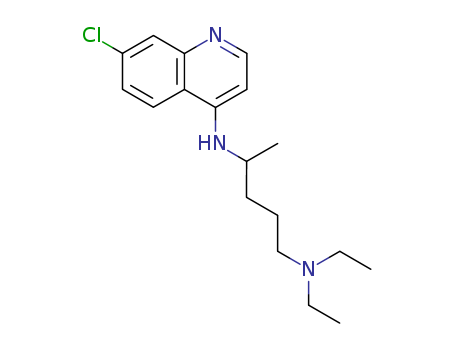10.1021/jm001096a
This research investigates the antiplasmodial activity and cytotoxicity of bis-, tris-, and tetraquinolines with linear or cyclic amino linkers, aiming to develop new antimalarial drugs that can overcome chloroquine (CQ) resistance. The study modifies bisquinoline heteroalkanediamines to enhance their bulkiness and rigidity, synthesizing various compounds and testing their effects on Plasmodium falciparum strains with different CQ resistance levels and their cytotoxicity toward mammalian cells. Key chemicals include chloroquine, various bis-, tris-, and tetraquinolines, and polyamines. The results show that cyclization increases rigidity but does not enhance activity compared to linear counterparts, though it eliminates cytotoxicity. Dimerization leads to tetraquinolines that are highly potent against CQ-resistant strains and noncytotoxic. The study concludes that increasing rigidity through cyclization or dimerization can improve antimalarial activity while reducing cytotoxicity, providing valuable insights for designing new antimalarial drugs.
10.1016/j.ejmech.2012.03.007
The study investigates the synthesis and biological evaluation of a series of 2-aminopyrimidine based 4-aminoquinoline compounds designed to combat malaria, particularly against drug-resistant strains of Plasmodium falciparum. The researchers synthesized these compounds using a protocol that involved the transformation of 3,4-dihydropyrimidin-2(1H)-ones (DHPMs) into 2-aminopyrimidines linked to 4-aminoquinolines. The compounds were evaluated for their in vitro anti-plasmodial activity against both chloroquine-sensitive (CQS) and chloroquine-resistant (CQR) strains of P. falciparum. The study found that some of these compounds, notably 10r, exhibited potent anti-plasmodial activity, with IC50 values significantly lower than that of chloroquine (CQ), especially against the CQR strain. The structure-activity relationship (SAR) analysis revealed that the length and nature of the spacer connecting the pharmacophores, as well as the presence of substituents like nitro groups, influenced the compounds' potency. The mode of action studies indicated that these compounds bind to heme and m-oxo-heme, inhibiting the formation of b-hematin, similar to CQ. Additionally, the compounds showed binding affinity to DNA, particularly AT-rich DNA, suggesting another potential mechanism of action. Molecular docking analysis with Pf DHFR further supported the compounds' ability to interact with this enzyme, which is crucial for the parasite's DNA biosynthesis. Overall, the study highlights the potential of these hybrid compounds as new anti-malarial agents with activity against drug-resistant strains.





